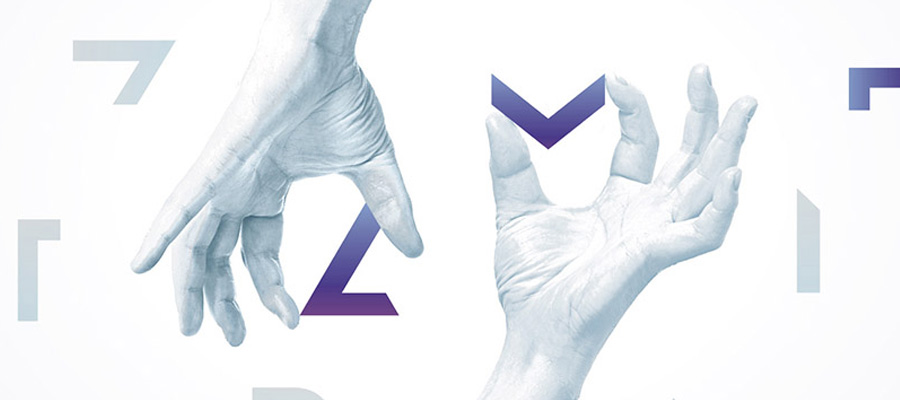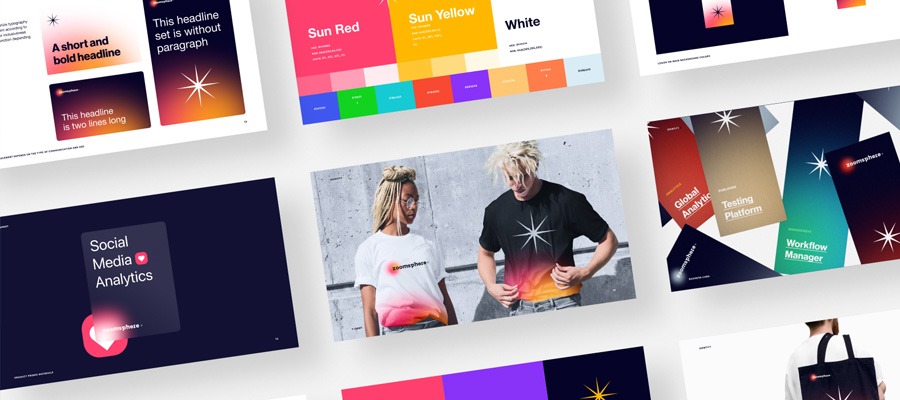Building a brand isn't just about creating a fancy-looking logo or website. Your brand is an extension of your corporate personality. Through branding design, you are promising to provide value to your customers. It is the one thing that will help you establish a secure connection with your audience. It's not surprising then that some of the world's top brands spend months and years researching an array of crucial factors while building their brand's story.

Ode to Joy by Haley Bridges
Of course, the best way to go is by hiring a brand design agency that helps you with your brand identity and directs you through all troubles. But, even if you hire an outstanding brand design company, you will have to carry on without its creative team once your branding project is done. For this reason, let's take a look at the most common branding mistakes companies around the world commit.
Trying to Be Everything to Everyone
The reality is that there's always going to be a few people who interact with your brand that won't like it. Even the world's most appreciated brands have their share of haters (though the percentage might be tiny). But that should be the least of your worries. Too often, while creating a brand image, people focus too much on haters instead of building a trusting relationship with a well-defined audience.
For example, one of the earliest organic supermarket chains in the US – Whole Foods – made foods without preservatives readily available to health-conscious consumers. While the brand has received awards for its social responsibility initiatives, it has also faced resistance for promoting its in-house brands over local produce. But instead of succumbing to these critiques, it continues with its working business strategy. For this reason, it continues enjoying the support of thousands of patrons and was even taken over by Amazon several years ago.
Making Promises That You Can't Keep
Forget all the viral campaigns; the real test of your brand is whether customers have pleasant experiences, irrespective of whether they make a purchase. One of the most common branding mistakes that businesses make is failing to align the brand experience with the brand promise. Consider this example: your brand messaging might revolve around offering the best possible customer service across the industry. However, the success of your brand will depend on whether or not you're providing the brilliant, unmatched customer service you promised.
Frequent Brand Reinventions
Some businesses tend to assume that branding is a quick solution to all their problems. They focus on short-term goals and end up feeling frustrated when their branding design efforts fail to show any significant results. So even before the brand has time to develop fully, companies withdraw their efforts. This practice rests in the belief that it is helping create a brand that will ultimately help the company grow. What companies don't realize is that they are giving the wrong message to their customers. Constant reinvention indicates that they aren't sure about themselves and what they are offering; customers are never able to establish a connection with the brand. Why? Because it keeps changing.
Ignoring Your Target Audience
In reality, branding design begins with this step: identifying and understanding your target audience. It would be foolish to go ahead and develop messages, taglines, and logos that look great but have nothing to do with your target audience. After all, the ultimate goal is to build a base of loyal fans and customers who associate with the values and core philosophy of your company.
To understand your target audience, it is necessary to develop a buyer persona (and you'd need a branding agency to do this). Ask questions such as "What kind of person would my target demographic identify with?" This is the personality that you need to incorporate into your brand.
Mimicking Your Competitors
Why do outstanding brand design companies emphasize researching competition before starting the branding process for your company? Well, the reason is simple: you must understand what has already been done by others before you sit down to work on your brand strategy. This helps to ensure that your brand stands out and makes a distinctive impression on the minds of the audience. Sometimes, you may even get inspired by a competitor's brand and implement some of their dimensions or approaches into your brand.
Nevertheless, it is still crucial to have a brand personality that is separate from your competition. Use your Unique Selling Proposition (USP) to draw customer attention. Work on highlighting clear differentiators so that customers have a solid reason to purchase your products over those of competitors. Your USP could, thus, serve as the focal point of your branding.
Forgetting Your Tag Line
What is a 'good' tagline? Generally, a suitable tagline consists of 3 to 6 believable words that complement your core services in addition to having brilliant overall appeal.
Coming up with an innovative, convincing, and relevant tagline may be the hardest part of your branding efforts and could take up a lot of time and thought. Take Avis, for example. Their slogan "We Try Harder" was developed for a good reason. The company was trying to tell its audience that the brand knows it isn't at the top in the industry, but it's making a concerted effort to beat the industry giants. This slogan automatically brings smiles to people's faces because everyone has been in that place at some point in their lives. In essence, Avis played the underdog card and won a nice following.
Think about Nike's tagline, "Just Do It." What does it tell you? It communicates that we need to stop being lazy and just do it – put on the brand's shoes and go out for cycling, jog, run, or any other physical exercise that is good for us. It is a slogan of encouragement for a broad audience that procrastinates when it comes to taking care of physical health.
And the takeaway here is that your tagline deserves a lot of thought. It should be able to communicate your core message in a convincing yet catchy way.
Not Being Consistent
When we talk about branding, consistency is extremely crucial. It is one thing that helps build familiarity and, ultimately, loyalty.
Consistency here means using the same name, logo, tag line, and other brand markers in all of your communications, whether external or internal. The company name mentioned on the sign in front of your office must match your business cards and corporate website, for example.
Even more delicate details, such as the way calls are answered by your company representatives, can make a difference in maintaining brand consistency. This person needs to know exactly what to say about your company and keep messaging consistent.
Final Thoughts
Avoiding these common branding mistakes can significantly help build a brand that offers real value to its customers. Again, it is essential to avoid short-term views when you're developing a branding strategy for your business. You shouldn't have a narrow focus on the present. Instead, your brand should reflect your company's future goals and objectives as well. The best way forward for you and your company is hiring a professional, reliable, and experienced branding design agency that will research your business, niche, target audience, and all crucial dimensions of your position on the market. Doing so will give them the tools and knowledge to develop the best solution for your business's survival and prosperity. This is what you need in a branding design agency.




















